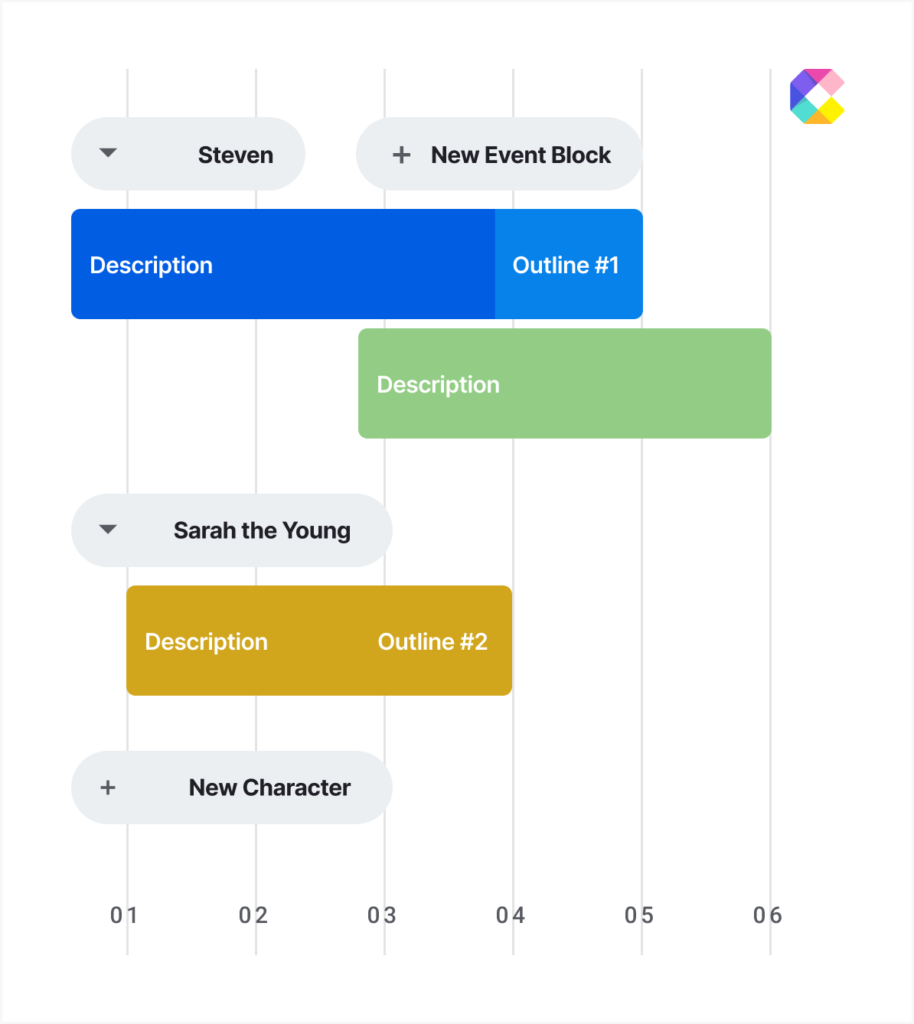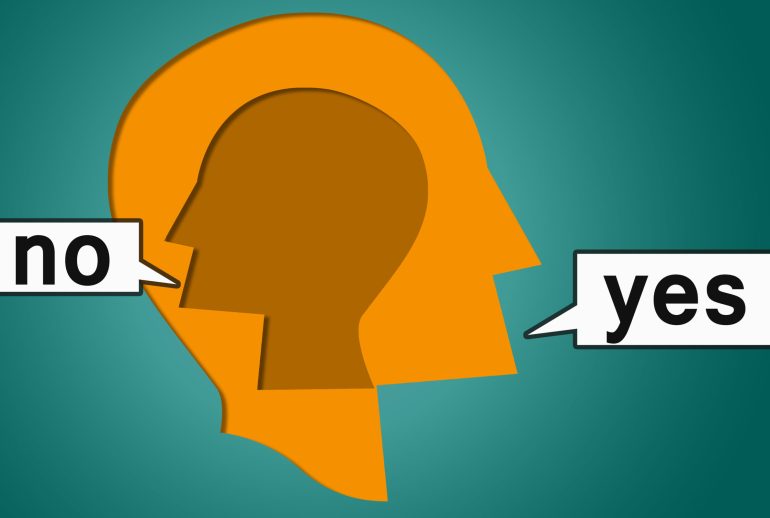External conflict is pretty easy—internal conflict is much more difficult. Learn everything you need to know!
Internal conflict might not come up often in writing guides, classes, or courses. However, it’s a powerful storytelling tool that can make a good story into a great book.
I’m sure you know conflict drives a story and tends to reside in the heart of every hero’s journey. But a lot of authors don’t know there’s more than one kind of conflict. Just knowing about internal and external conflicts is only the beginning.
In this article, you’ll learn all about internal conflict, how you can use this device in your story, and how it will make your writing stronger. Don’t worry, we’ll be covering both internal and external conflicts in separate articles to give you a deep dive and all the things you need to know to step up your writing skills!
Think you already know all about internal and external conflict? Think again—we’re going to cover concepts you might never have considered and this deep dive might just surprise you. Don’t believe me? Why not get reading now and add this skill to your arsenal!
Did you know there are different types of internal conflicts?
Internal conflicts, on the surface, seems like a pretty easy, cut-and-dry topic.
Obviously internal conflict is the opposite of external conflict which is character vs. some outside force. Internal conflict focuses on the tensions within a character’s self—their inner conflict. This can mean an internal struggle between needs, desires, and/or morals. They can also include the head vs. heart struggle or their mind vs. knowledge.
For example, a character unsure about a relationship because they’ve been cheated on in the past (and constantly worry that their partner is cheating, even with verifiable proof the partner is not) is a type of internal struggle. Not feeling good enough, a hero/white knight complex, or a lack of confidence are also all examples of internal conflict.
While every story contains conflict, many strike a balance of internal and external conflicts. Every single human being struggles internally in some way, shape, or form. So should your characters.
There are different types of internal conflict.
Since we’re discussing conflicts, it’s important to note that I have no desire to offend anyone, nor am I in anyway judging any group or individual. These are simply types of internal conflict that anyone can (and potentially has) experienced that you can use in writing.
So think of internal conflicts as character vs. self, and we’ll narrow the types down from there.
Internal societal conflict
Yes, this can absolutely be an external conflict, however, it’s important to note that there can be some crossover. When we’re discussing how characters internally deal with a problem, we’re safe to call that an internal conflict. An example of this would be a young woman who wishes to take up a male-dominated career.
Moral conflict
This is when your character’s beliefs are challenged and they must make a difficult decision that goes against their morals. For example, someone who is a pacifist might not want to kill the bad guy, but may be forced to do so if they wind up in a battle where they must kill the bad guy or die.
Political conflict
Political struggles are rife in our day to day lives, and they exist within many types of literature as well. For example, a character who dislikes a specific politician for personal reasons, but agrees with that person’s policies can find themselves in an internal conflict. Admitting we like something someone we dislike does can be a very difficult issue to internalize.
Existential conflict
This is when the character questions their place in the world. An easy way to explain this one is writing characters in deep grief who wonder what the point of living is. Not in a way that they want to harm themselves, but simply the realization that life might feel like a pointless struggle. Since I postulate that most people have experienced this feeling, this is a powerful internal conflict to utilize.
Religious conflict
This one is multi-faceted, but takes several forms. This can be when a character questions their beliefs, or when they have feelings or desires that conflict with their beliefs. This can cause serious internal struggle and conflict as the character comes to terms with their feelings, thoughts, beliefs, and how religion impacts all these parts of them.
Love conflict
This type of conflict generally refers to when a character faces any situation in which a loved one could be hurt by a decision the character makes, when a character must choose the greater good over a loved one, or where they must do something to benefit said loved one, but that choice will bring pain or struggle (such as getting an alcoholic family member into rehab).
Self-perception conflict
When characters fight internally about their authenticity, we wind up with a self-perception conflict. This one is neatly summed up in one single example; when a writer, screenwriter, model, or actor struggles with impostor syndrome. (Impostor syndrome is, simply put, when someone believes they’re a fraud and at any time, someone will learn they’re not as good as others think, or as they’ve been led to believe, and that fear can ruin careers.) Any time the reality of a character and their belief about themselves don’t align, this is a self-perception conflict.
How to utilize the different types of internal conflict.
I mention in the sister article (External conflict) that readers experience a kind of fatigue when authors use the same or similar types of conflict over and over in their writing. This holds true for internal conflicts as well.
If you’ve been following along, then you know that good writing means solid, multi-dimensional characters with depths and complexities. Your character might struggle with several of the issues above. But only one event in the book about any one of the issues might make the reader confused as to why the conflict isn’t a prevalent one.
Imagine a character internally struggling with putting a loved on in rehab, then never mentioning it again. There needs to be some follow up, some resolution, but if a character simply goes on and on and on about the issue with no real resolution, readers will grow bored and upset that there’s no progress. Even progress with backsteps (getting the loved one into rehab, only to have them relapse or escape and having to find them, catch them, and get them back into rehab) is better to read than an entire book where the character struggles and only, at the end, actually gets their loved one into rehab. This is an extreme example, of course, but I hope it serves the purpose I need it to. Which is to help you understand that even if your character faces the same internal struggle throughout the book, they need to evolve, change, or otherwise vary up the view they have of the struggle, the angle of the struggle, or their mindset around the conflict.
Utilizing internal conflict to build tension.
It’s no secret that conflict builds tension in a story.
But there is a secret in that internal conflict is a wonderful way to add depth and complexity to the conflict your characters face. For example, internal conflicts that pit people against one another—who then must find a way to work together in spite of their differences—makes for very engaging reading. A romance where she refuses to fall for her boss because ‘sleeping her way to the top’ isn’t acceptable might resist falling in love with her perfect and handsome boss.
Same thing for internal conflicts that a character truly struggles with; like the pacifist that must choose violence, the vegan that must come to terms with the fact that they eat meat while drinking or who must do it to survive some alien world, or the person wondering what the point of life is who must literally save the world. All of these make for an interesting struggle that readers will want to see to conclusion because rectifying our internal struggles isn’t easy, and we’re fascinated by characters that speak to our own personal issues.
With so many types, can I use them all?
Certainly. I’m not sure I’d recommend it though. That’s a lot of different things to keep up on, and I’m not sure how readers would feel about such a deep, potentially conflicting character, but I won’t say it can’t be done!
Again, almost every writing rule can be broken. The trick is to know the rules and break them with purpose. Break them with a plan. Break them when breaking them makes the story, writing, or idea stronger. Don’t break them to be different, edgy, or to be overly complex. Break them when doing so will add to your story, not detract from it.
I do think that combining several different issues for every main character is a good idea. There’s not one person on earth with a single internal struggle in their lives. Especially if we’re looking at a lifetime of experiences and ideas.
Where can I find examples of internal conflicts?
I’d say start with yourself. Look at your own internal battles, where they stem from, what they mean, and why you have them. This is a great way to begin to unravel and understand how and why some of these issues arise, and ways to deal with them. You might even learn something about yourself.
Beyond that, look to news stories, look to friends and family, look at movies, books, and songs. Conflict makes the world go round. It makes our media explosive, gripping, impossible to look away from.
If you can look at the world around you and see how it works at its core, you better prepare yourself for writing in worlds that only exist in your mind. And with all the knowledge in these articles, we hope to help you take those ideas from mind to paper. You can do this and we can help!
Visualize your story with the timeline tool. See plot points, events, and other story details represented graphically to showcase patterns and relationships as well as the overarching storyline.




